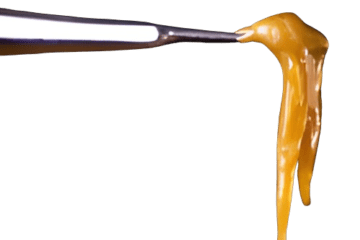
Cannabis Award & Growers Cup Category Explainer
By boasting a wide array of award categories, cannabis competitions showcase diverse aspects of cannabis culture and the industry. Igniting excitement among participants and spectators alike, these classifications aren’t just titles; they symbolize ambition, ingenuity, and persistence, often offering contestants unique chances for recognition.
Understanding these categories enriches spectators’ experience, enabling them to grasp each entry’s intricacies. Ultimately, it’s the collective journey of participants, judges, and spectators that breathes life into these classifications. In this article we will explore and expound some regularly recurring categories of Cannabis Awards and Grower’s Cups worldwide.
Cannabis Flowers
In the world of cannabis cultivation, two primary subspecies reign supreme: Indica and Sativa.
Sativa strains of cannabis are thought to have originated in equatorial regions, while Indica strains are believed to have originated in the Hindu Kush mountain range of Afghanistan and Pakistan.
Indica plants typically boast shorter stature, broader leaves, and dense foliage. Sativa, on the other hand, presents taller plants with elongated branches and more narrow leaves. These botanical differences underscore the diverse genetic adaptations of cannabis to various climates and regions.
Beyond their horticultural distinctions, Indica, and Indica-dominant cannabis strains are generally known for inducing relaxation, while Sativa and Sativa-dominant varieties are celebrated for their energizing, mood-enhancing effects.
- Indica Flowers: Indica cannabis strains, renowned for inducing relaxation and sedation, are favored options for evening or nighttime use. Their dense flower clusters, or buds, produce a soothing body high. Indica plants exhibit shorter, bushier growth patterns and flower quicker than Sativa varieties.
- Sativa Flowers: In contrast, sativa cannabis strains elicit a more cerebral, euphoric high, and are prized for their uplifting and energizing effects, making them ideal for daytime use. These strains foster creativity, focus, and productivity. Sativa strains usually have more elongated buds and taller, slender growth patterns. They generally take longer to flower than their Indica counterparts.
- Hybrid Flowers: Hybrid cannabis strains are created by crossbreeding Indica and Sativa plants, resulting in a blend of characteristics from both types. These strains may exhibit a wide range of effects, flavors, and aromas, depending on the specific genetics involved. Hybrids are often cultivated to achieve desired combinations of potency, growth characteristics, and therapeutic properties.
- Ruderalis Flowers; Autoflowering varieties: Ruderalis cannabis is a lesser-known subspecies of cannabis that originates from regions with harsh climates, such as the Russian tundra.
Ruderalis plants are characterized by their small size, short stature, and resilience to environmental stressors. While Ruderalis plants have low levels of THC and CBD, they are valued for their ability to automatically flower based on age rather than light cycles.
This trait has been bred into autoflowering cannabis varieties, which are hybrids that combine the autoflowering trait with the desirable characteristics of Indica or Sativa strains. Autoflowering varieties are prized for their quick growth cycles and ease of cultivation, making them popular choices for outdoor and novice growers.
Resin
Resin typically refers to the sticky, often amber-colored substance that contains cannabinoids, terpenes, and other compounds found in cannabis. It can be extracted from the plant material using various methods.
Live resin, on the other hand, is a specific type of cannabis concentrate that is made from freshly harvested cannabis plants that have been flash-frozen immediately after harvesting. This freezing process preserves the plant’s cannabinoids and terpenes, resulting in a concentrate with a more robust flavor profile and potentially higher potency compared to traditional resin. Live resin is often sought after for its fresh taste and enhanced effects.
Hashish
The traditional understanding of hashish, or hash, refers to a concentrated form of cannabis resin that has been used for centuries across various cultures for its psychoactive effects. Hashish is typically produced by collecting the resinous trichomes, which contain high concentrations of cannabinoids like THC (tetrahydrocannabinol), from the cannabis plant. These trichomes are then compressed into a solid, sticky substance.
Hashish can vary in color, texture, and potency depending on factors such as the strain of cannabis used, the extraction method, and the processing techniques employed.
The following methods encompass a variety of techniques used for extracting cannabinoids and terpenes from cannabis plant material, each with its own distinct advantages and characteristics.
Traditional Extraction
- Traditional Sieve Extraction (Dry Sift Hash): Dried cannabis flower or trim is gently tumbled or shaken on series of screens with varying mesh sizes. The friction causes the resinous trichomes to fall through the screens, resulting in dry sift hash.
- Hand-Rubbing (Charas): This traditional method involves gently rubbing fresh cannabis flowers between the palms of the hands to extract resinous trichomes. The resin is then collected and rolled into balls or sticks.
Solvent-Based Extraction
- Butane Hash Oil (BHO) Extraction: BHO extraction involves using butane as a solvent to extract cannabinoids and terpenes from cannabis plant material. The solvent is then purged, leaving behind a concentrated oil known as butane hash oil.
- CO2 Extraction: In this method, carbon dioxide is used as a solvent to extract cannabinoids and terpenes from cannabis plant material under high pressure and low temperatures. The resulting extract is typically high in purity and potency.
- Ethanol Extraction: Ethanol extraction involves soaking cannabis plant material in ethanol to dissolve cannabinoids and terpenes. The ethanol is then evaporated, leaving behind a concentrated extract.
- Hydrocarbon Extraction: Similar to BHO extraction, hydrocarbon extraction uses hydrocarbon solvents such as propane or hexane to extract cannabinoids and terpenes from cannabis plant material.
- Supercritical Fluid Extraction (SFE): This method uses supercritical CO2 as a solvent to extract cannabinoids and terpenes from cannabis plant material. Carbon dioxide reaches a supercritical state at 1071 psi and 31.1°C. When a molecule is in a supercritical state, it has properties of both liquid and gas.
Solventless Extraction
- Rosin Pressing: This solventless (i.e. without use of solvents) extraction method involves applying heat and pressure to cannabis plant material to extract cannabinoids and terpenes. The resulting extract, known as rosin, is a sticky, golden substance.
- Water and Ice Extraction (Bubble Hash): This method uses ice-cold water to freeze the trichomes on cannabis plant material, followed by agitation to break them off. The mixture is then filtered to separate the resinous trichomes, resulting in bubble hash.
Extracted Concentrates and Hash
As discussed in the section above, traditional hashish making involves collecting resin glands (trichomes), from cannabis plants. Methods vary, but typically, dried cannabis is agitated to dislodge trichomes, which are then collected and pressed into blocks or balls. These blocks are then cured, resulting in hash with varying potency and characteristics.
Modern hash making methods offer greater control over the extraction process, allowing producers to achieve various consistencies and qualities by adjusting factors such as temperature, pressure, extraction time, and the use of additives or post-processing techniques. The types of products made this way are known under an array of different names.
- Wax is a type of extract concentrate that is highly potent and typically has a soft, wax-like consistency. The process of making wax cannabis involves using solvents like butane or CO2. It ranges in texture from creamy to crumbly and can vary in color from light yellow to dark amber.
- Honeycomb is a type of wax hat has a characteristic texture resembling honeycomb or sponge toffee. Tis concentrate is typically made using solvents. During the extraction process, the solvent is purged, leaving behind a concentrated oil that is then whipped or agitated to introduce air bubbles. This whipping process creates the honeycomb-like texture, with pockets of air trapped within the concentrate.
- Budder: Budder is created through a similar process of extraction and whipping, but the final consistency is achieved through a different balance of heat, agitation, and purging. This results in a smoother, more uniform texture compared to honeycomb.
- Crumble: Crumble is a type of concentrate that has a dry, crumbly texture, similar to honeycomb. It is often easy to handle and can be broken apart easily for dabbing.
- Shatter: Shatter is a type of extract that is glass-like and transparent. After extraction, the solvent is purged from the concentrate to ensure safety and purity. The resulting concentrate is then cooled and allowed to harden, resulting in its characteristic glass-like appearance. It is typically amber or golden in color and breaks easily into pieces, hence the name “shatter.”
- Dabs: Dabbing involves vaporizing a small amount of the concentrate using a specialized dab rig or vaporizer. The concentrates used in this methods are referred to as “dabs,”.
Devices
Cannabis flowers, hashish and other extracts are commonly consumed through smoking, vaping, or dabbing.
Vaporizers are devices used to heat cannabis flower or concentrates to a temperature that vaporizes the active compounds without burning the plant material. This process creates vapor that can be inhaled for its desired effects. Vaporizers come in various forms, including desktop units, portable handheld devices, and vape pens.
Vape pens, specifically, is a type of portable vaporizer that is designed to be compact and discreet. It typically consists of a battery, a heating element (atomizer), and a cartridge or chamber for holding the cannabis concentrate or oil. When the user activates the device (often by pressing a button or inhaling), the battery heats up the heating element, which then vaporizes the cannabis oil or concentrate in the cartridge. The vapor is then inhaled through the mouthpiece.
Prerolls, or pre-rolled joints, are a ready-to-smoke cannabis cigarettes that have been rolled and filled with ground cannabis flower.
Dag rigs are a type of water pipe used to vaporize concentrates. They consists of a nail (typically made of glass, quartz, or titanium), that is heated with a torch, a dab tool for handling concentrates, and a mouthpiece for inhaling vapor.
Cannabis Holidays
420 April 20th, or 4/20, is recognized as the most significant day in cannabis culture. It serves as a symbolic holiday celebrated by enthusiasts worldwide.
The origins of 420 are debated, but may have been in 1971 in California, where a group of San Rafael High School teens, known as the Waldos, routinely gathered after school at 4:20 p.m. to smoke weed. Over time, 420 evolved into a day for cannabis advocacy, community gatherings, and celebrations.
710, referring to July 10th, or 7/10, marks the connotative holiday celebrating marijuana concentrates. Reversed, 710 spells “OIL,” symbolizing dabs and other concentrates.
The 710 holiday gained traction in chat rooms and social media posts after it was coined by the Salt Lake City rapper, Task Rok in 2011. Task Rok, along with DJ Linus Stubbs, released an album titled “The Movement”, which prominently featured songs celebrating the merits of butane hash oil and concentrates. The album’s tracks, such as “7:10” and “Boil That Oil,” shifted the focus from the iconic 420 (associated with cannabis flower) to the world of oils and concentrates.









You must be logged in to post a comment.